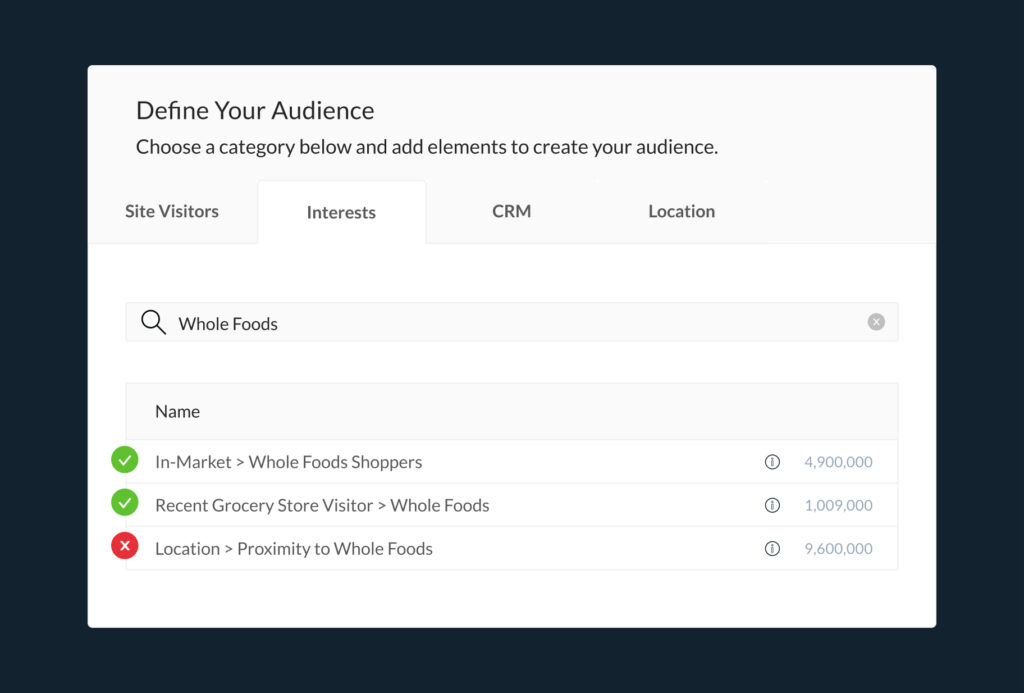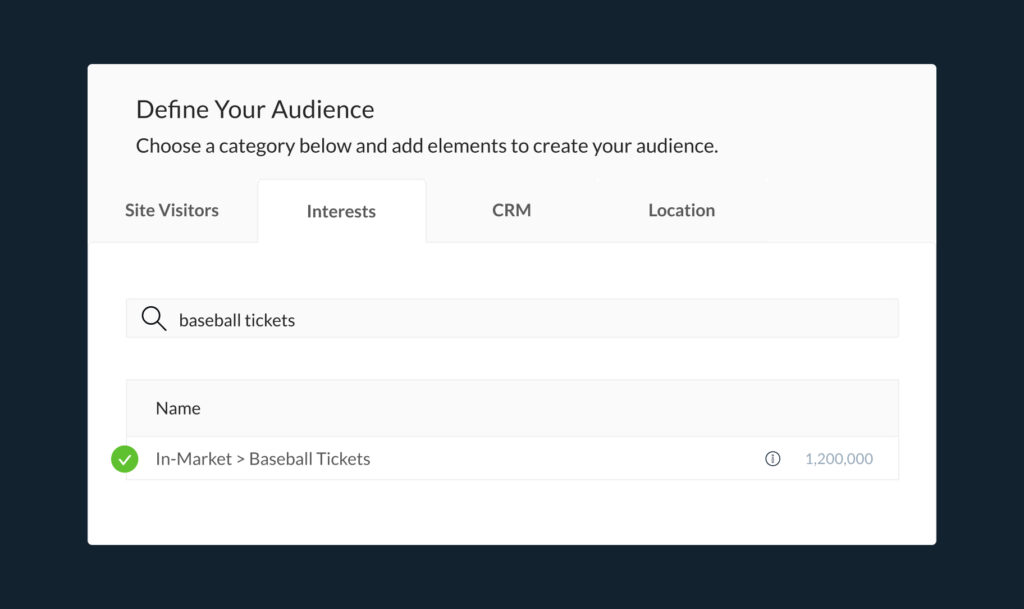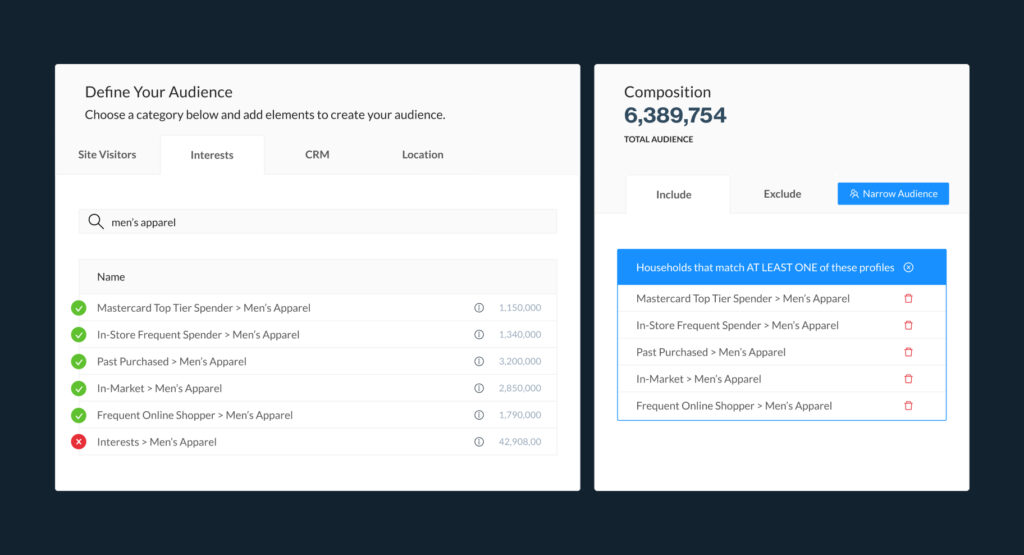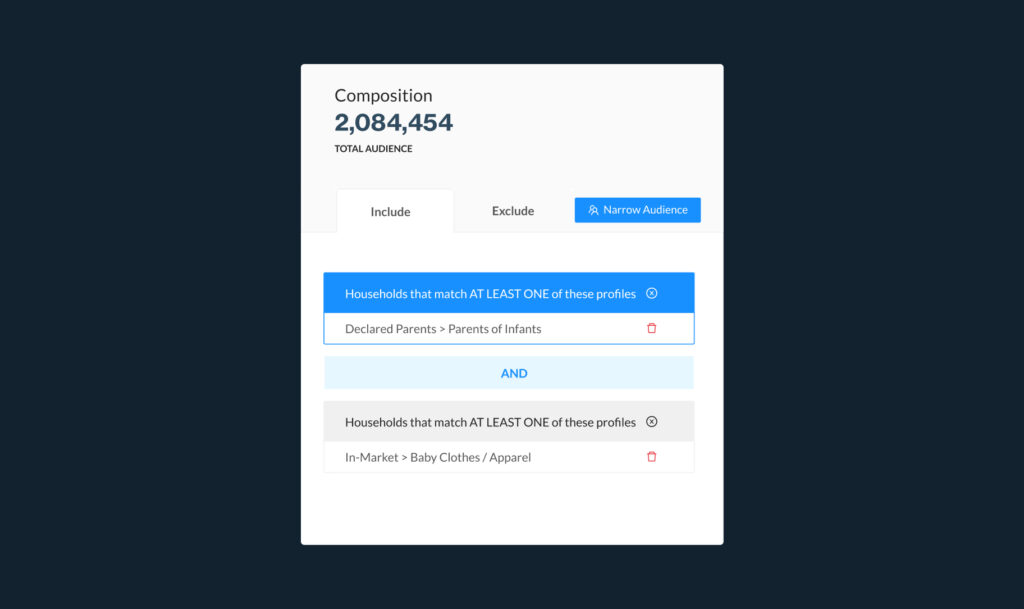Local TV Advertising Costs: 10 Factors to Consider
by Frankie Karrer
1 Min Read

7 Min Read
Whether you’re a Connected TV (CTV) advertising newbie, a veteran, or anywhere in between, you know audience building is a key component of lasting success on the channel. And over the last few years, how advertisers approach their audience strategies has shifted. Gone are the days when a massive number of impressions reigned supreme. Sure, it’s important to get your ads seen, but what’s more important is that the right people see them.
Dollars spent on serving ads to households who will never visit your website (much less convert) are dollars wasted. This makes targeting the right audiences one of the most important factors in every CTV prospecting campaign. But with so many available audience segments (MNTN Performance TV offers 85k+), it can be overwhelming to pick which ones to use.
We’ve got you covered. In this article we’ll share our best practices based on data-driven learnings from some of MNTN’s top-performing customers.
Moving forward, we’ll be talking about audience groups based on a set of definitions — “AND” and “OR” statements. In the MNTN Performance TV platform, “AND” statements are created when you click “Narrow Audience”. “OR” statements, on the other hand, refer to adding categories to one group under the header “households that match at least one of these profiles”.
Here’s what else you need to know:
“AND” vs. “OR” Statements
Exclude vs. Include Statements
From working with thousands of customers over the years, we’ve learned what works — and what doesn’t — when it comes to choosing third-party audiences. Here are seven best practices for improving your CTV performance, based on what we know:
1. When selecting an audience, read the description carefully
If you’re using search terms, it can be easy to accidentally select an audience category totally unrelated to your target audience. To ensure this doesn’t happen, double check that each category is relevant before adding it to your audience.
Example: When looking for households that shop at Whole Foods, you might come across categories for “proximity to Whole Foods.” In this case, you’d likely want to target people who shop at the store — not everyone who lives near one — so you might not include the “proximity” category.

2. Avoid most demographic data
You are targeting households, not people, so we don’t recommend including gender or age categories. That said, some demographic data — like household income — might make sense in select cases.
3. Be picky when selecting audience categories
Consider the audience description carefully. Does it suggest the included households would be valuable potential customers?
Example: If a segment is labeled as “In Market,” it typically means that households in that segment have been included based on recent shopping behavior for the product mentioned — in other words, it’s likely they’ve bought that product. This data is very valuable, especially compared to categories based on general interests.

4. A bigger audience is not always better
This is especially true when a larger category has broader criteria. In many cases, using multiple smaller categories gives you more precise targeting. Don’t be afraid to target only a handful of categories if they’re the most relevant to your audience.
Example: Let’s say you use “OR” statements to build an audience with five categories that have 1-3M households each. Then you decide to add in a sixth that has 40M households — that 40M category is now an overwhelming majority of your overall audience, which means your ad will be optimized largely in favor of that majority. If it’s not a top performer, it’ll hurt your chances to connect with those other five (potentially much more fruitful) categories, and your overall performance will suffer.

5. When using “OR” statements, each category should only be included if you’d still target that category as a standalone audience
If it is unlikely that the vast majority of households within a category are in your target audience, do not include the category in your targeting — unless you’re also layering it with an “AND” statement.
Example: An automotive advertiser wants to reach parents with school age children in order to target households that would likely benefit from having a larger vehicle. They find multiple segments that target parents with kids in their desired age range. Then, they choose to add a few more segments for moms, dads, and suburban parents. However, adding the last three segments would probably prove ineffective for the advertiser, because they would encompass ALL Moms, ALL Dads, and ALL suburban parents (which includes parents of adult children). Since it’s unlikely that the majority of households in those segments have school age kids, these categories shouldn’t be included, as they’re too broad.

6. Use “AND” statements
“AND” statements can be really helpful in honing in your targeting and reaching your desired audience — this happens by finding the overlap of households that fall within two relevant interests/behaviors. In most cases, it’s better to opt for interest-based “AND” statements (i.e. additive audiences) over interest-based exclusions. By subtracting rather than adding, you risk excluding potentially valuable households from seeing your ads.
Another example: If you’re looking to target households with children, it’s more beneficial to create an “AND” statement with categories related to parenting and children. As opposed to excluding categories for households without children. (In this case, you’d miss all those childless aunts and uncles who love to spoil their nieces and nephews who are included in those children-related categories.)

7. If you’ve been running a campaign with a broader audience, check your reporting to see what audience categories are performing the best and target only those
Note: this analysis is more difficult when you use “AND” statements. When honing in and selecting a few high performing categories, we also recommend searching for new categories that could be added into the audience, especially for evergreen campaigns.
One of the best things about CTV is the precision audience targeting it offers advertisers. But if you aren’t smart about how you’re choosing third party audiences, your ad dollars might be going to waste. Keep our best practices in mind when developing your next CTV campaign and you’ll ensure you’re reaching the right audiences and producing the best performance possible. Looking for more tips on third party audiences? We’d love to chat!